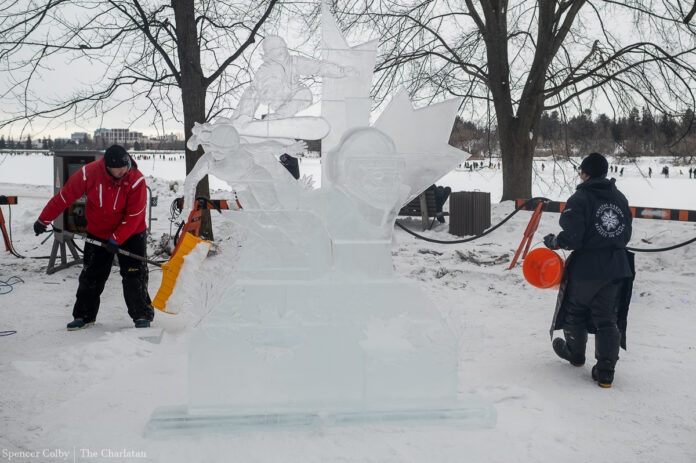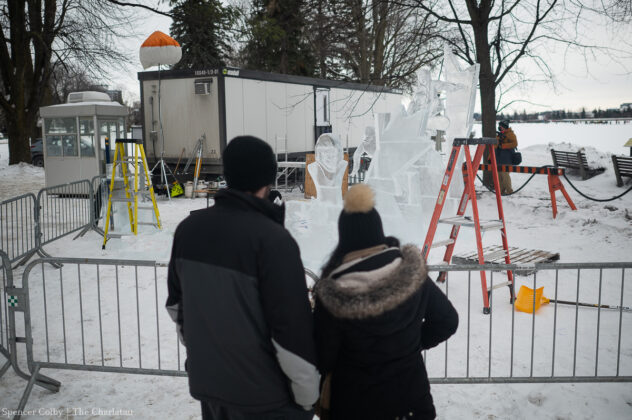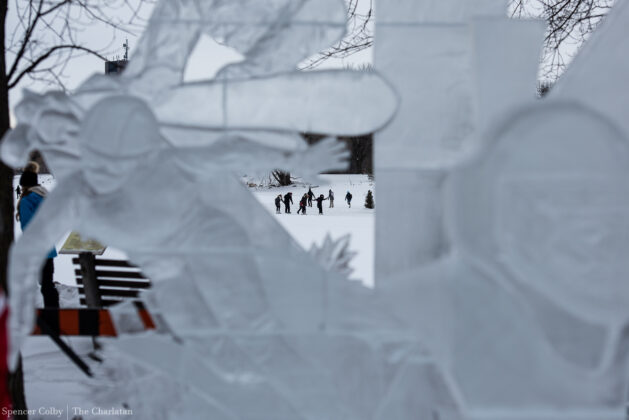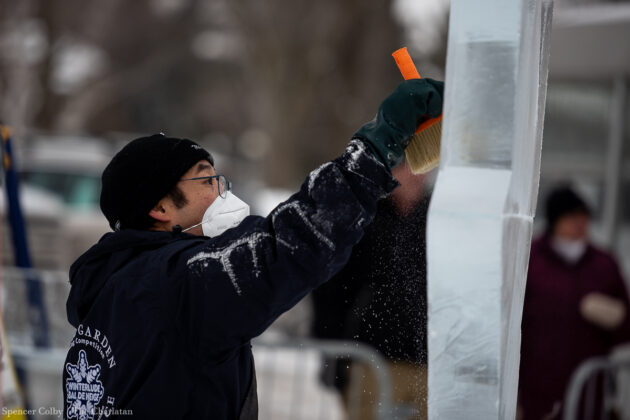
Winterlude 2022 kicked off this week in a muted, COVID-friendly fashion. The Ottawa festival, normally a bustling venue, has been reduced to only its feature event – the Winterlude National Ice Carving Championship.
The competition pits pairs of carvers from all ten provinces against each other and runs from Feb. 11 to 20. At the end of the competition, the three sculptures that receive the most votes online from members of the public will be announced winners.
This year’s Winterlude ice carving theme is “Olympic and Paralympic Spirit,” based on the winter Olympics that began in early February.
Representing Ontario this year are Suguru Kanbayashi and Kevin Ashe. The pair are long-time carving partners, both competing in their 13th Winterlude, though it will be their first time in more than five years competing as a duo.
“It is fun to rekindle our relationship. We work so well together,” Ashe said. “It is very unique to have this kind of partnership.”
Team Ontario’s entry to the competition is inventive. Three separate walls of ice form their sculpture, which together, take the shape of a maple leaf. The leaf is flanked by elaborate carvings of winter athletes in a range of motion.
“It forces people to find the right perspective,” Kanbayashi said. It’s an idea he said he’s been toying with for quite some time.
Covered head to toe in thick coats, hats and boots, Kanbayashi and Ashe have developed a synergy in their carving. They play off each others’ strengths. Kanbayashi considers himself to be the brains of the operation, planning and optimizing the builds, while Ashe does much of the strenuous carving.
“You’re going to be sore afterwards,” Ashe remarked. “We are moving thousands of pounds of ice manually.”
The Ottawa-born pair define their ice carving as a mix between artistic ability, strength and speed. The competition process is exhaustive. Kanbayashi says he spends eight hours alone simply on the planning process and another eight hours stacking ice. After stacking, printed templates are frozen to the ice to help mark out the carving process. The rest of the time is devoted to carving.
Overall, the carvers have an allotted time of 20 hours to work with their ice. Though the experienced duo claims that as veterans they don’t feel as much pressure as they used to, they said they’ve still had to learn new tricks to make the carving process easier.
“We’re senior carvers now, so we can be smart about it …. For example, we learn how to carve low, lift the ice up and stack it after…. We also find experienced carvers know how to factor in rests,” Ashe said.
Ashe described just how important Kanbayashi’s intensive planning has been for their team this year.
“Our signature is really creative sculptures with creative themes,” Ashe said. “I get very bored of the usual dragons and swans and fish, so it is nice to have Suguru’s input and to his credit we get a lot of recognition.”
Kanbayashi said he began ice carving at a young age because of his father, one of the original Winterlude ice carvers back in the ‘80s.
“I grew up around it. My dad let me play with the chainsaws as a teenager and when you’re 14 or 15, playing with chainsaws, its pretty awesome. You get addicted to it,” Kanbayashi said.
At a carving workshop in 2004, he met Ashe, a full-time chef who had just begun carving. After watching Ashe carve for only 30 minutes, Kanbayashi told his dad that Ashe was going to be his new partner. Less than a year later, they came fourth in the Ice Magic Festival in Lake Louise, Alta., their first international carving competition together.
This year, competitors have been asked to carve in their home provinces, something that is unique to this year’s Winterlude. After a week of varying weather across the country, competitors have been left with an unpredictable playing field.
“You can plan all day, but if it’s 6 C like they have in Vancouver, all that goes out the door. If it’s -20 C like yesterday, you have to adjust based on sun and temperature,” Ashe said. “It doesn’t matter how much you play, you still have to wing it a little bit.”
As an example, Ashe described an issue he had while working on the snowboarder portion of their piece.
“It was too cold to put water between the blocks to freeze it, so the whole wall was wobbling,” Ashe said. “It was just loose unfrozen blocks of ice weighing a couple thousand pounds, so it’s a bit scary.”
Despite these challenges, the Ontario team are confident in their abilities and eager to make their supporters proud this year.
“We always play to win. I think that’s part of our anxiety and stress. We want to represent well and give a good product,” Ashe said. “We will go that extra mile to do something a little more dangerous or a little less conventional to do so.”
With the carving process now over, voting for the competition will begin on Feb. 11 and close on Feb. 20. You can see the sculptures and vote for your favourite here.
Featured image by Spencer Colby.









